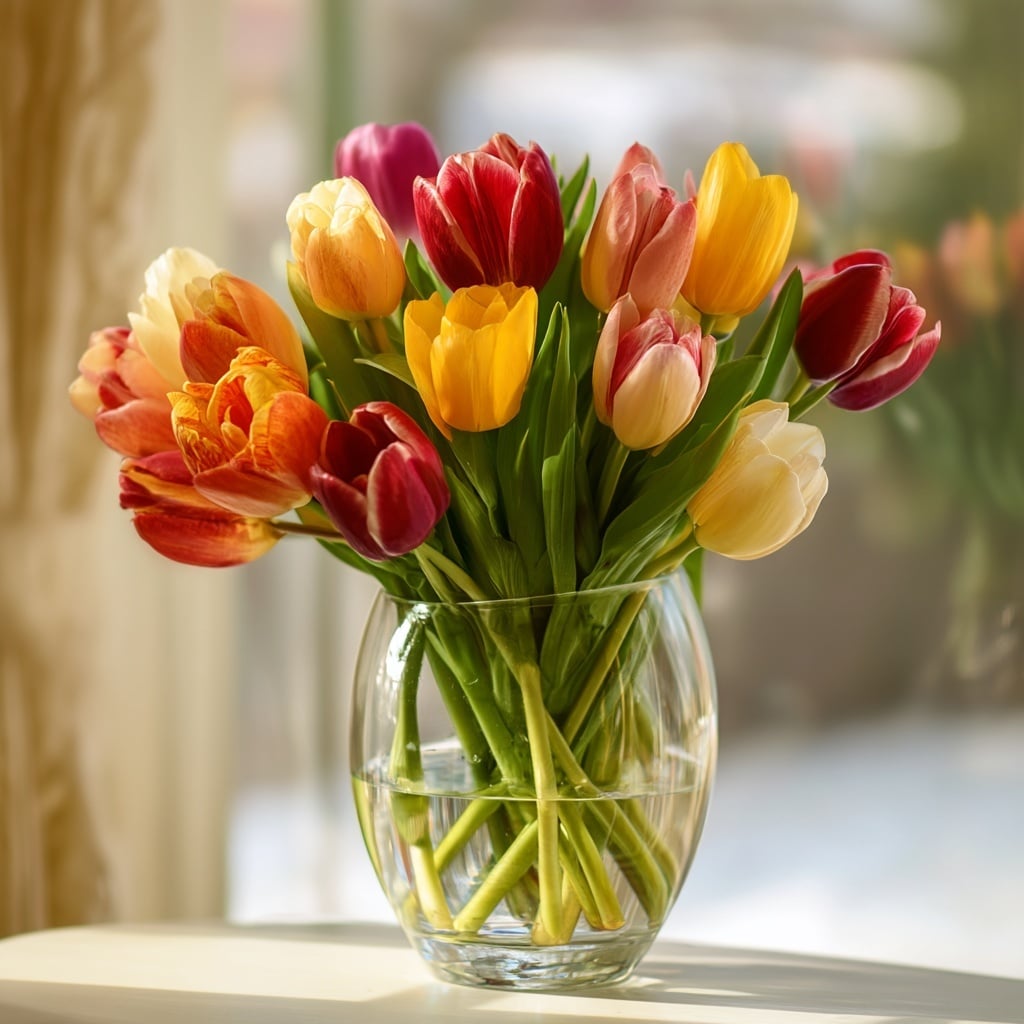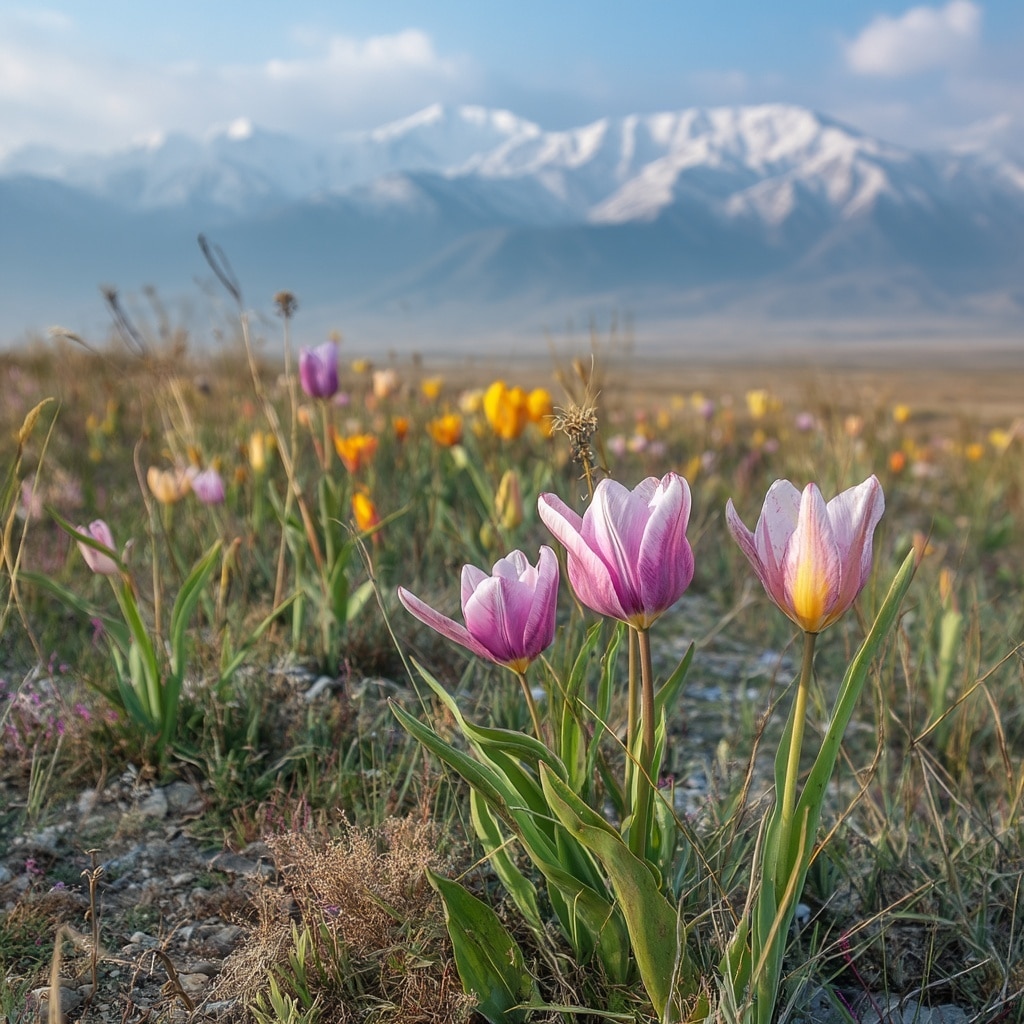Tulips are among the most cherished and recognizable flowers in the world, known for their clean shape, striking colours, and timeless charm. With a graceful simplicity that fits into nearly any setting—from springtime gardens to elegant bouquets—tulips have captured the hearts of gardeners, florists, and flower lovers for centuries. But beyond their visual beauty, tulips carry rich symbolism rooted in history, culture, and emotion. Whether you’re giving them as a gift or planting them in your garden, understanding the meaning behind each colour of tulip can help you choose the perfect bloom for every moment.
Table of Contents
Origins of Tulips
Though often associated with Dutch flower fields, tulips did not originate in the Netherlands. Their story begins in the rugged landscapes of Central Asia, where they grew as wildflowers centuries ago. The first known cultivation of tulips dates back to around 1000 AD in Turkey, where they were deeply admired for their elegance and became symbols of wealth and power in the Ottoman Empire.
The name “tulip” is believed to come from the Turkish word for turban, a nod to the flower’s rounded, layered appearance. In fact, tulips became so culturally significant in Turkey that they inspired art, poetry, and even a national festival, which continues to be celebrated in Istanbul today.
Tulips made their way to Europe in the 16th century, thanks to the botanist Carolus Clusius, who planted them in the botanical gardens of the Netherlands. Their popularity soared so dramatically in the 17th century that the country experienced what is now famously known as Tulip Mania—a period during which tulip bulbs were so valuable, they were traded like currency, and at one point, even cost more than gold.
Today, tulips remain one of the most iconic symbols of Dutch horticulture, but their roots and cultural significance extend far beyond the fields of Holland.
What Tulips Symbolize
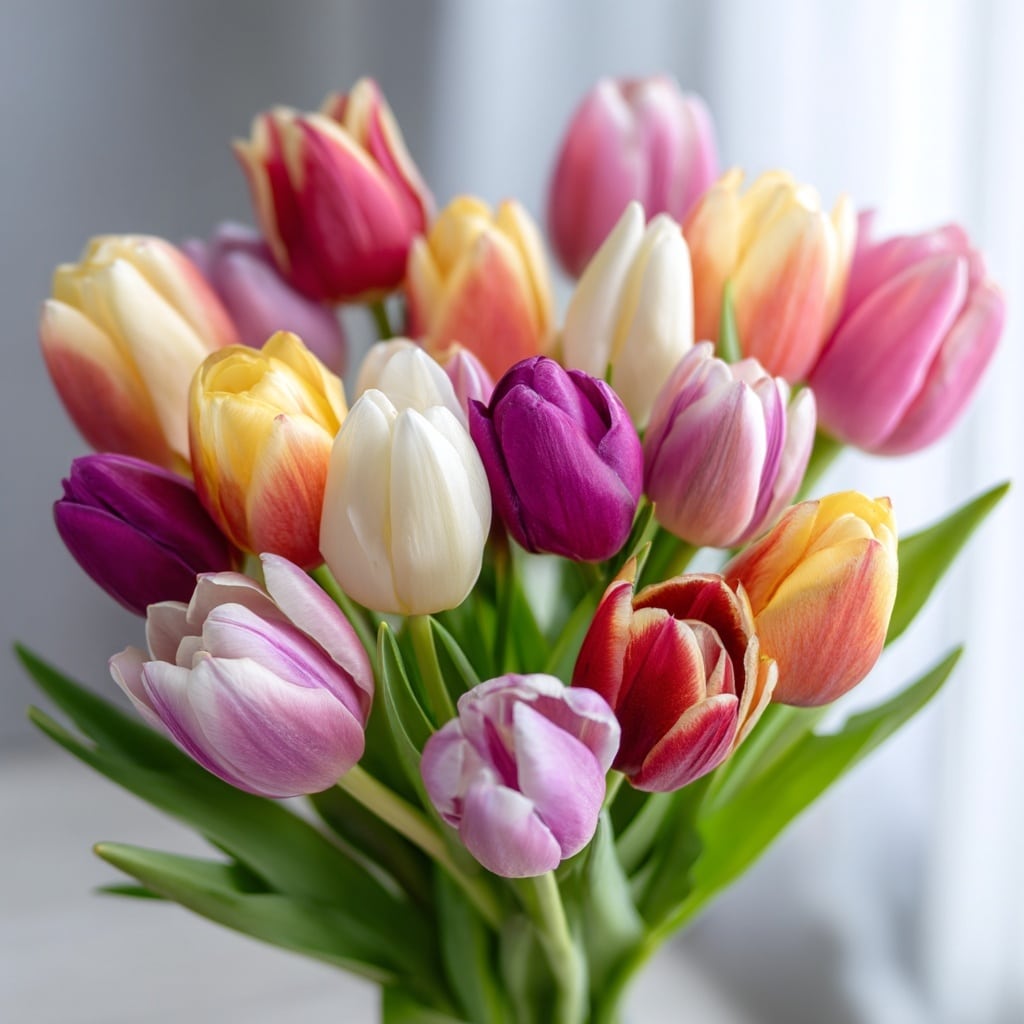
Tulips are more than just beautiful blooms — they carry a range of powerful meanings that have made them a timeless symbol in cultures around the world. Depending on the context and color, tulips can convey deep emotional messages, making them a thoughtful choice for many life events.
💖 Perfect and Deep Love
One of the most widely recognized meanings of tulips is true love — not just romance, but a deep, enduring kind of affection. Their longstanding history as a symbol of love makes tulips a popular flower for couples, anniversaries, and weddings.
🌱 Rebirth and New Beginnings
Because tulips are among the first flowers to bloom in early spring, they represent rebirth and renewal. They’re a perfect way to celebrate fresh starts, such as a new job, moving into a new home, or welcoming a baby.
💞 Charity and Compassion
Since the Victorian era, tulips have also been linked to charity and kindness. Their bright, uplifting presence has made them a symbol of generosity, and they’re often used in logos and events for charitable causes to evoke warmth and compassion.
Whether you’re expressing heartfelt emotions or simply celebrating a season of change, tulips carry a quiet strength and elegance that speak volumes without a single word.
Tulip Colour Meanings
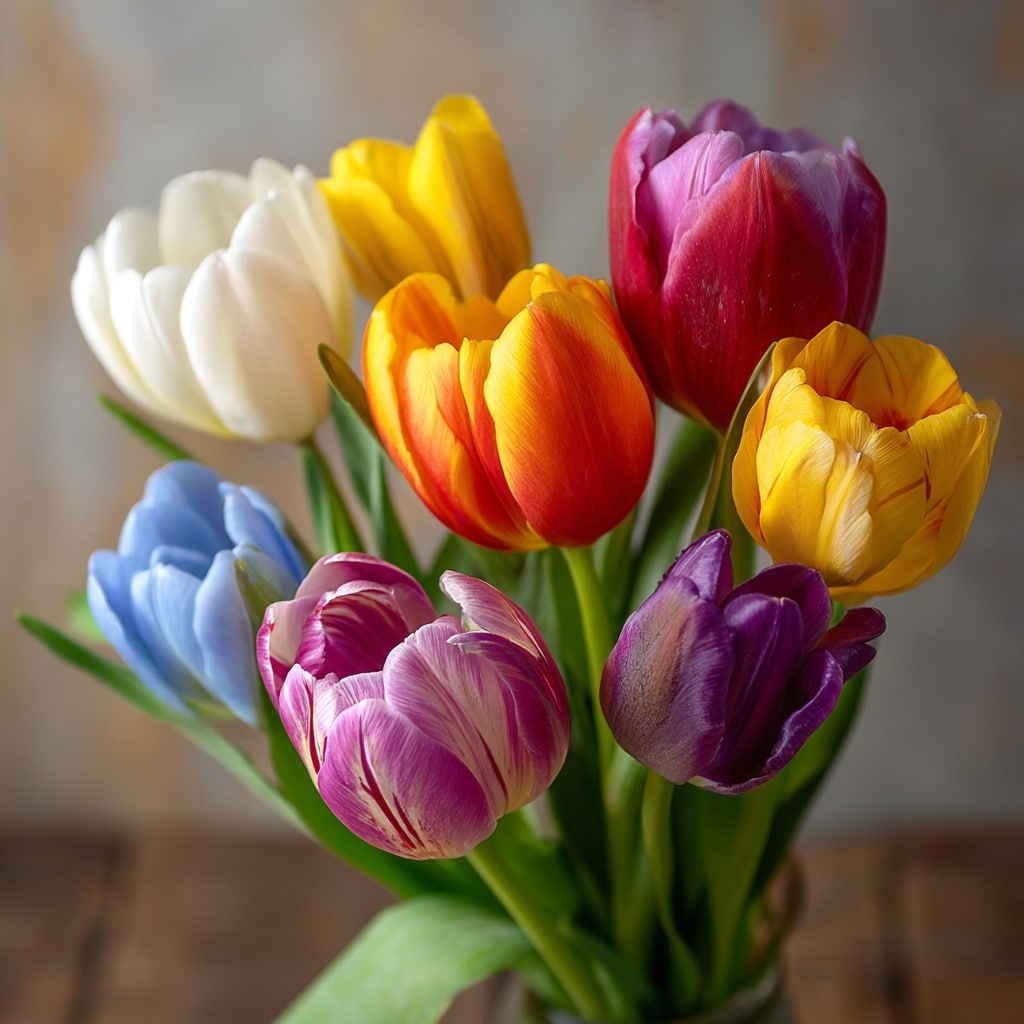
Each tulip colour carries its own unique symbolism, making this flower not only beautiful but also meaningful. When choosing tulips, understanding their colour meanings can help you send just the right message, whether it’s for a joyful celebration, a romantic gesture, or a heartfelt apology.
🤍 White Tulips — Purity & Forgiveness
White tulips symbolize purity, respect, and forgiveness. They’re often chosen for religious ceremonies, sympathy bouquets, and fresh starts. If you’re making amends or honouring a significant life milestone, white tulips are a gentle and sincere choice.
🌞 Yellow Tulips — Cheerfulness & Hope
Bright and cheerful, yellow tulips stand for happiness, sunshine, and hope. In Victorian times, they were believed to mean “there’s sunshine in your smile.” Planting yellow tulips in a garden is also thought to attract good luck and prosperity.
🍊 Orange Tulips — Energy & Enthusiasm
Vibrant and full of life, orange tulips represent enthusiasm, encouragement, and success. They’re perfect for celebrating achievements or sending positive vibes to someone starting a new venture or navigating change.
❤️ Red Tulips — Passion & True Love
Red tulips are the ultimate symbol of romantic love and passion. They’re ideal for anniversaries, Valentine’s Day, or any occasion where you want to express deep affection. A bouquet of red tulips says “I love you” with timeless elegance.
🌸 Pink Tulips — Affection & Care
Soft and gentle, pink tulips convey warmth, affection, and good wishes. They’re often sent to friends and family, and they’re especially thoughtful for celebrating milestones like graduations, promotions, or welcoming a new baby.
👑 Purple Tulips — Royalty & Elegance
Historically associated with wealth and royalty, purple tulips embody grace, nobility, and admiration. They add a touch of sophistication to any bouquet and are perfect for someone you deeply respect or admire.
💙 Blue Tulips — Tranquility & Peace
Though rarer and often specially cultivated, blue tulips symbolize serenity, calm, and inner peace. They’re an ideal choice for offering comfort or support, or simply as a reminder to slow down and breathe.
With such a wide range of colours and meanings, tulips are incredibly versatile. Choosing the right shade can add a powerful layer of intention to any bouquet or garden bed.
Types of Tulips
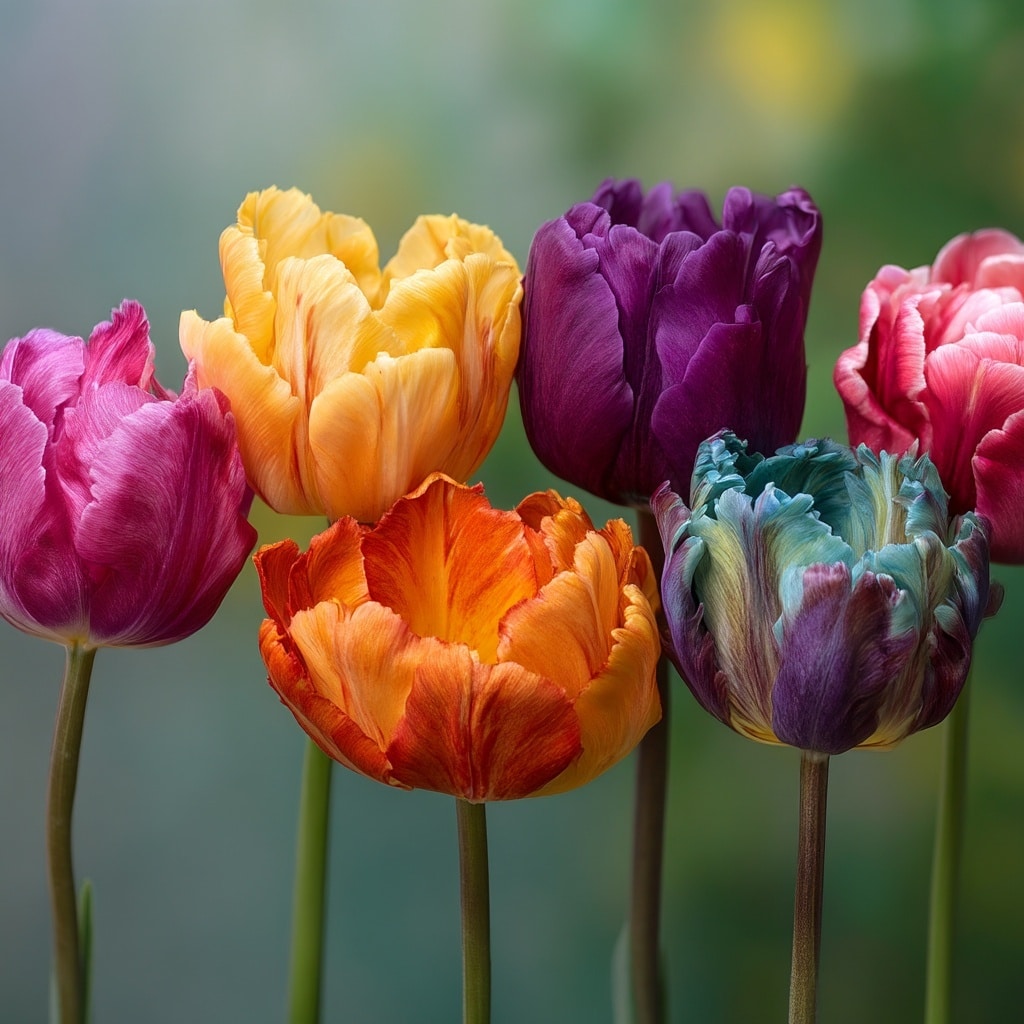
With over 3,000 registered varieties and more than 150 tulip species, this flower offers an extraordinary range of shapes, sizes, and bloom times. Tulips are classified into groups based on their appearance and flowering season. Whether you’re designing a spring garden or picking a bouquet, knowing the types of tulips can help you choose the perfect fit.
🌱 Early Tulips
- Bloom time: Early spring (March–April)
- Appearance: Classic cup-shaped flowers, short stems
- Best for: Cold climates, indoor pots, early color in the garden
🏵️ Triumph Tulips
- Bloom time: Mid-spring
- Appearance: Strong, sturdy stems with bold, rich colors
- Best for: Borders, pots, windier areas due to their durability
🌟 Darwin Hybrid Tulips
- Bloom time: Mid to late spring
- Appearance: Tall, broad blooms with vibrant, uniform color
- Best for: Formal beds, mass plantings, long-lasting displays
🦜 Parrot Tulips
- Bloom time: Late spring
- Appearance: Fringed, ruffled petals with flame-like streaks
- Best for: Statement pieces, bouquets, adding drama to floral designs
💫 Fringed Tulips
- Bloom time: Late spring
- Appearance: Delicate fringes on petal edges, unique textures
- Best for: Edgy, modern garden styles, floral arrangements with flair
✨ Other Notable Types
- Double Late Tulips: Resemble peonies, with layers of petals
- Greigii Tulips: Compact, with mottled leaves and early blooms
- Fosteriana Tulips: Wide blooms and vibrant spring color
- Lily-Flowered Tulips: Elegant, pointed petals that flare outward
Tulip Blooming Season & Regrowth
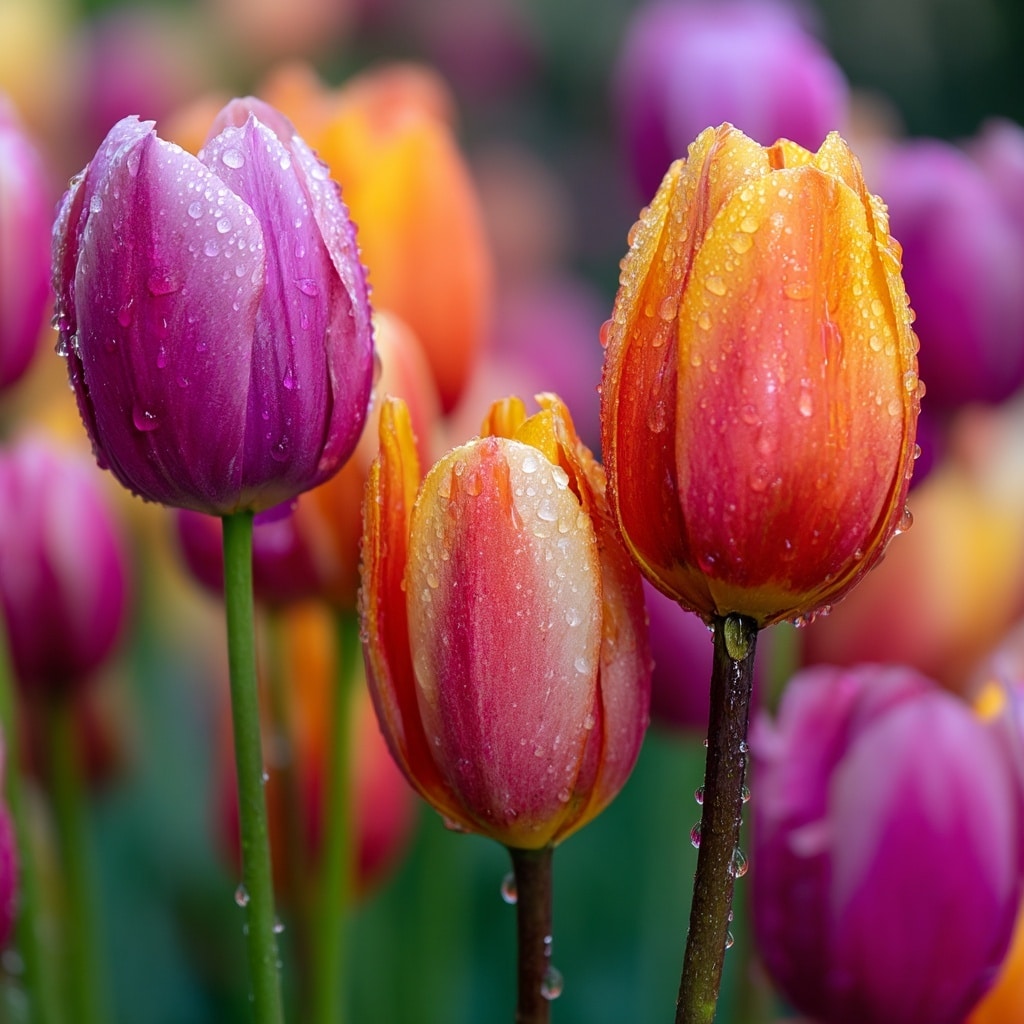
Timing is everything when it comes to enjoying the beauty of tulips. These spring-blooming flowers are some of the first to awaken after winter, filling gardens with color and life when little else is flowering.
When Do Tulips Bloom?
The tulip bloom season depends on the variety and local climate:
- Early tulips: Bloom from March to early April
- Mid-season tulips: Peak in mid to late April
- Late tulips: Extend the season into May or early June
By planting a mix of early, mid, and late-blooming tulips, you can enjoy continuous colour for up to 8 weeks.
Do Tulips Come Back Every Year?
Yes — tulips are technically perennials, meaning they can return year after year. However, their performance depends on:
- Climate: Tulips thrive in regions with cold winters and dry summers
- Soil: Well-draining, nutrient-rich soil helps bulbs store energy
- Post-bloom care: Allowing foliage to die back naturally ensures the bulb recharges for the next season
That said, some modern hybrids don’t rebloom as reliably. Gardeners often treat these tulips as annuals, replanting fresh bulbs each autumn for the best floral display.
For perennial performance, try planting species tulips or Darwin hybrids, both known for their resilience and strong returns.
How Long Do Cut Tulips Last?
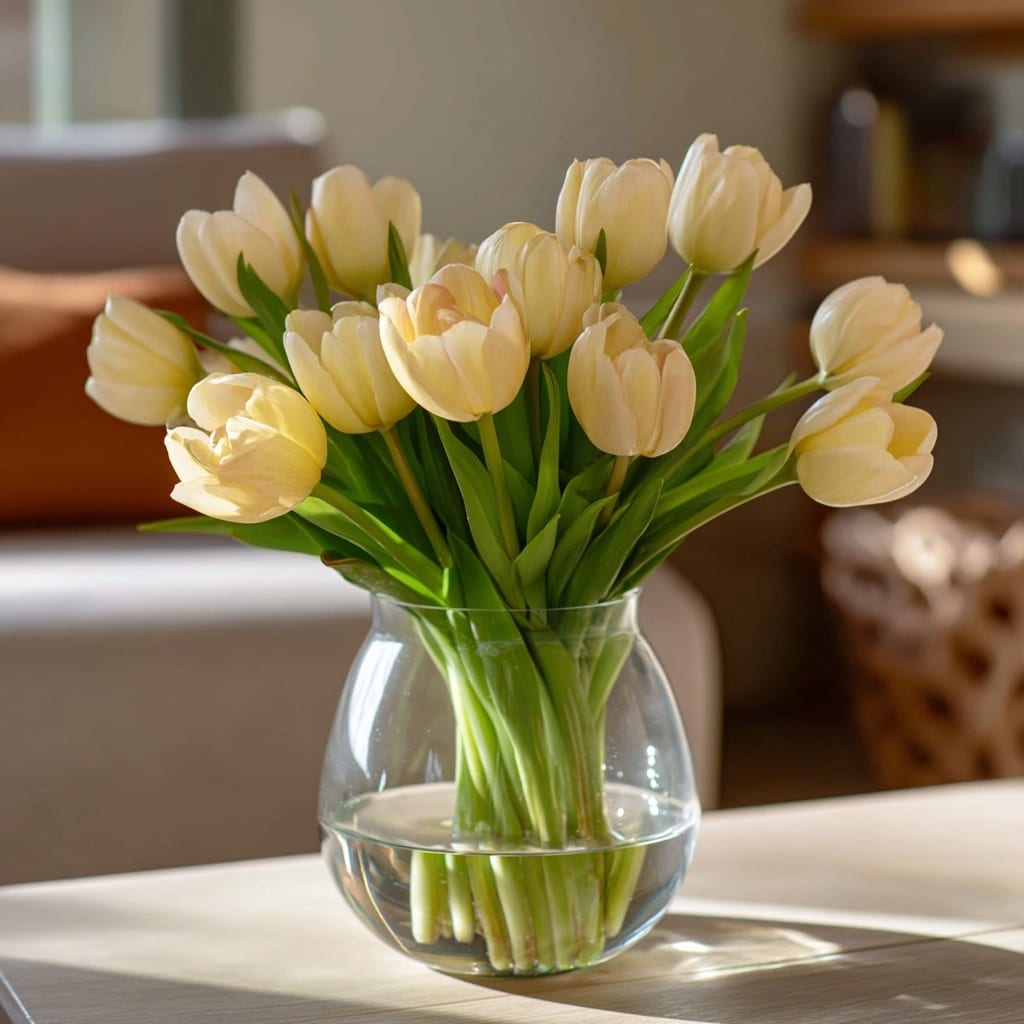
When used in floral arrangements, tulips are not just stunning — they’re also surprisingly long-lasting for a spring flower. With the right care, you can enjoy their elegant beauty indoors for up to a week or longer.
Typical Vase Life
Cut tulips typically last 5 to 7 days, though some can hold up for as many as 10 days under ideal conditions.
Tips to Make Cut Tulips Last Longer
To extend the vase life of your tulips, follow these simple steps:
- Trim the stems at an angle before placing them in water
- Use a clean vase to prevent bacterial growth
- Change the water daily to keep it fresh
- Keep tulips cool — away from direct sunlight, heaters, and drafts
- Avoid mixing with daffodils unless pre-soaked, as they release a sap that shortens tulip life
Tulips also continue to grow after being cut — sometimes gaining several inches in height. This unique quality adds dynamic movement to arrangements, making them feel more alive and organic.
Fun Facts About Tulips
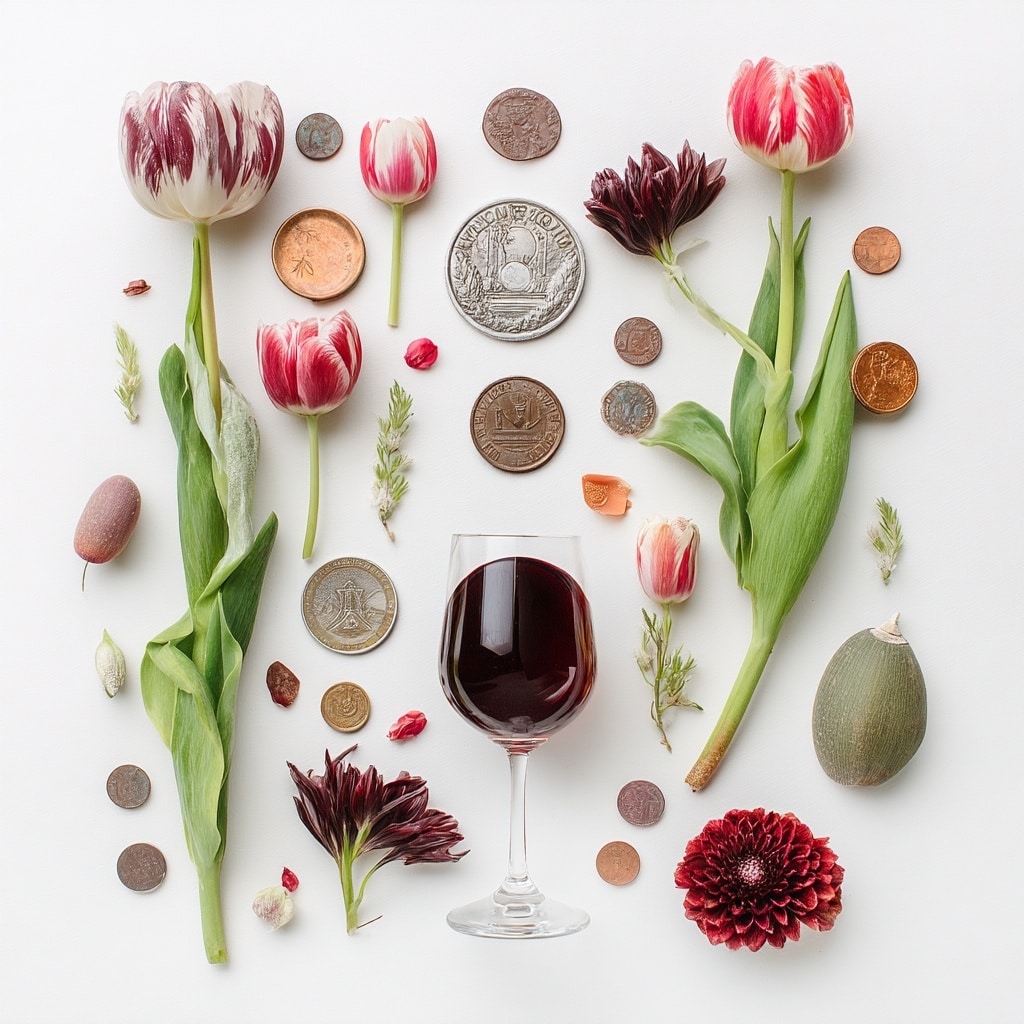
The charm of tulips extends far beyond their colourful petals. These iconic spring flowers come with a fascinating history and a few quirky characteristics that make them even more special. Whether you’re a gardener, a flower lover, or just curious, here are some fun tulip facts you might not know:
Worth More Than Gold
During the height of Tulip Mania in 17th-century Holland, some tulip bulbs were worth more than a house, and prices skyrocketed to the point where tulips were traded like currency — even more valuable than diamonds for a brief time.
Edible Petals
Tulip petals are edible and can be used in salads, as garnishes, or even as a substitute for onions in recipes. Some adventurous winemakers have even tried making tulip wine.
Anniversary Flower
Tulips are the official flower of the 11th wedding anniversary, symbolizing a deep and lasting love that continues to grow stronger with time.
Endless Variety
There are over 150 species of tulips and more than 3,000 varieties registered today. With so many colors, shapes, and bloom times, it’s no wonder tulips remain one of the world’s most beloved flowers.
From royal gardens to wild fields, and from high-end floristry to humble spring beds, tulips have stood the test of time — and continue to inspire with both their beauty and their story.
Conclusion
Tulips are far more than just a springtime favorite — they’re a flower rich in history, bursting with meaning, and full of charm. From their symbolic roots in love, rebirth, and elegance to their vibrant colour meanings and striking varieties, tulips offer something for everyone.
Whether you’re planting them in your garden, arranging them in a vase, or gifting them to someone special, choosing the right tulip can speak volumes. With proper care, these blooms will not only brighten your space but also leave a lasting impression.
Few flowers combine beauty, symbolism, and versatility quite like tulips — a timeless floral icon that continues to bloom in both gardens and hearts around the world.

